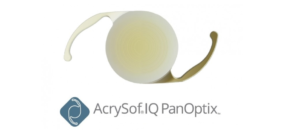Do you love the idea of LASIK but you’re concerned that it may not be right for you? There are several ways you can have your vision corrected without glasses or contact lenses. Vision correction surgery is more popular than ever.
When most people think about vision correction surgery, LASIK is the first thing that comes to mind. While LASIK is a highly effective procedure, it isn’t the only vision correction procedure, and it may not be suitable for everyone.
Another vision correction surgery that may be better for someone who isn’t a good LASIK candidate is refractive lens exchange, or RLE. Refractive lens exchange is a simple procedure that removes the natural lens of the eye and replaces it with an artificial lens, called an intraocular lens, or IOL.
This IOL can correct your vision and is especially beneficial for older adults who have vision loss. If you’re not a good candidate for LASIK but you still want to correct your vision, refractive lens exchange may be a better fit for you. Keep reading to find out a few reasons why you may want to consider refractive lens exchange!
A LASIK Alternative

LASIK eye surgery is an excellent way for many people to eliminate wearing glasses or contacts and achieve visual freedom. But LASIK is most effective for younger adults and adults with refractive errors like nearsightedness, farsightedness, and astigmatism.
While it can correct farsightedness, LASIK is not designed to fix the visual problems that develop due to aging and getting older. If you suffer from presbyopia, which occurs when the lens loses its flexibility as you get older, this is not something that LASIK can correct.
The good news is that refractive lens exchange can correct presbyopia, among other age-related eye conditions. RLE is most effective for those suffering from age-related visual issues.
Many IOLs are explicitly designed to eliminate the need for reading glasses as well as regular glasses. Most IOLs are also specifically made to correct presbyopia, a common affliction in adults over 40.
Correcting Presbyopia
Presbyopia is one of the most common age-related eye conditions. It’s different from refractive errors like nearsightedness or farsightedness.
Unlike these refractive errors, it makes it harder to see things up close, like reading a book or newspaper. People that need reading glasses use them because they have presbyopia. This is because as many people get older, it’s harder for them to focus up-close.
IOLs used in RLE can help people who have presbyopia see better at more distances. RLE is the ideal vision correction procedure if you have presbyopia, as it’s the only one that specifically addresses presbyopia rather than other refractive errors.
Cataract Prevention

If refractive lens exchange sounds a lot like cataract surgery, that’s because it’s almost identical to it. The difference is that with cataract surgery, a cataract gets removed from the natural lens of the eye. With RLE, you may not have a cataract yet, and the lens may still be transparent when it’s removed.
Cataracts form on the natural lens of the eye, causing it to become cloudy and more challenging to see through. The progression usually happens slowly as you get older.
Eventually, cataracts can make it very hard to see, making it necessary to remove them during cataract surgery. But if you have RLE before you have cataracts, it means you’ll never have to worry about getting them.
Cataracts can only form on the eye’s natural lens. Once you get an intraocular lens, it prevents cataracts from ever developing.
Many people who have cataracts also have presbyopia. By choosing to have a procedure like refractive lens exchange, you can correct both presbyopia and remove cataracts simultaneously.
But many people had issues seeing up close before they developed cataracts. RLE is perfect for these people because it corrects their vision and prevents them from getting cataracts.
Choose a Premium IOL

There are many different IOLs to choose from when you get RLE, depending on your visual needs. The most basic, standard kind of IOL is a monofocal lens.
A monofocal IOL is a lens that’s uniform throughout and set to see at one distance. Usually, when a patient chooses a monofocal lens, the first eye is for seeing up close, and the second eye will be for seeing things far away. This is an option called monovision.
Monovision can help you see well enough at intermediate distances, but you may still need reading glasses. If you’re going to get RLE, you want to achieve the best vision possible, as well as visual freedom from any glasses or contacts.
For that, you need a premium IOL. Premium IOLs have a special design that helps to improve your vision at multiple distances, with many made to eliminate the need for reading glasses by allowing you to see very well up close.
There are many kinds of premium lenses available. Some can help you see at several distances very well, while others feature designs that help improve your vision up-close.
They can correct presbyopia as well as farsightedness and even astigmatism. The kind of premium IOL you should choose depends on your needs.

Do you frequently use the computer or other digital devices? Are you active? Do you have astigmatism? These are things you should go over with your eye doctor when choosing an IOL.
Premium IOLs are more expensive than monofocals and not covered by insurance. The obvious benefit of a premium IOL is that you’ll be able to reduce your dependence on glasses and contacts.
If you want to get the most out of RLE, a premium IOL is the way to go. Are you still wondering if refractive lens exchange is for you? Schedule an appointment at New England Eye Center in Boston, MA, today to find out more about how this vision correction procedure could change your life for the better!




